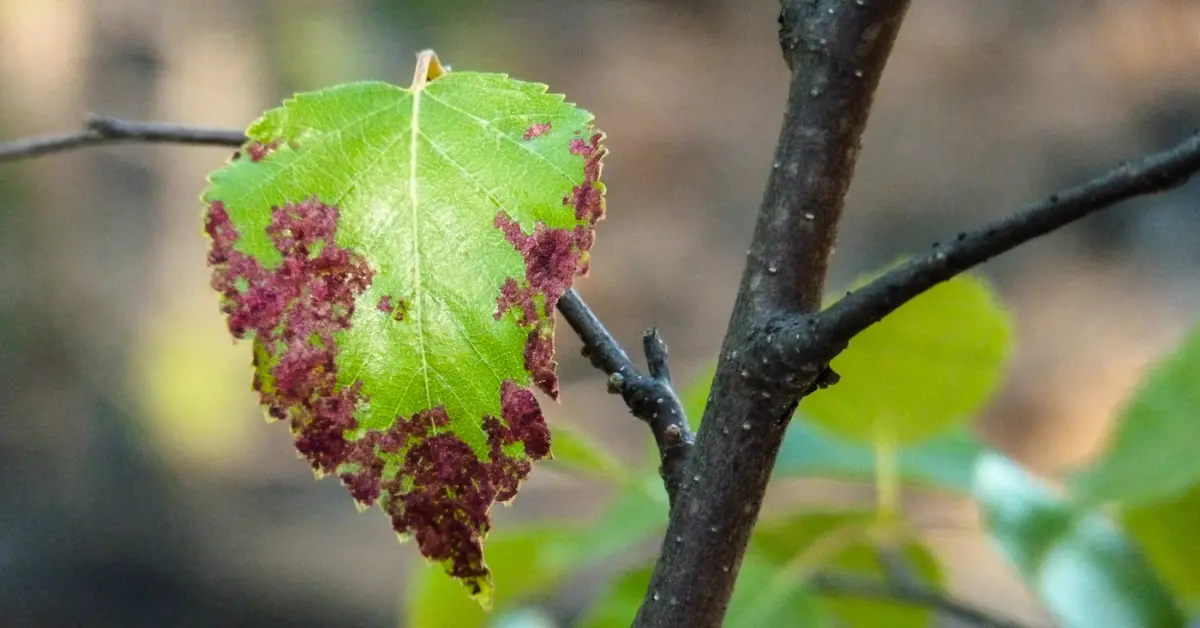When you think about it, your trees have a pretty rough life. Living outside in North Texas means constant, unceasing exposure to all sorts of hazards—extreme heat and sunlight, bitter cold and ice, all sorts of hungry insects throughout the year, and even high winds, debris, and hail from severe storms. While trees have withstood many of these threats for years, there is one prolific “silent killer” of trees that few people think about all that often.
Tree disease comes in many different forms, however, almost all of them could prove to be deadly to your trees, and result in trees becoming weak, brittle, and potentially dangerous. However, trees can’t just outright tell us when they aren’t feeling well. Therefore, it is important to know the signs that indicate tree disease and take action when you spot any of them.
1. Irregularly Browning Leaves
Under normal circumstances, most leaves tend to go brown in a sort of “all at once” fashion. If you notice spots on leaves that have turned brown and continued to grow and spread until the whole leaf is brown, then that leaf has probably gone brown as a result of disease. Several different types of tree disease cause irregular leaf browning or simply leave large brown blotches on leaves. If you see these patches on leaves, call a professional to have your tree diagnosed and treated for disease.
2. Dry, Brittle Branches
Many tree diseases prevent your tree’s structure from getting the resources it needs to remain strong and durable. Notably, a few diseases specialize in preventing tree cells from absorbing water. These cells dry out, die, and become extremely brittle, resulting in trees that pull apart with little to no effort. If you have a tree with branches that snap right off with little to no resistance, it could be diseased and dying (if it isn’t completely dead already).
3. Barren, Bald, Or Sparsely Populated Spots
Does your tree have a spot where it seems like leaves struggle to grow or refuse to grow at all? This is a tell-tale sign of a disease preventing those normally-budding areas from being able to sprout like they normally would. Sometimes this is the result of insect damage, but in many others this is the visible result of a tree disease. Monitor your trees for uneven growth and schedule treatment for any that seem to struggle to bloom or fail to bloom at all in certain parts of their foliage.
4. White Spots On Leaves & Shrubs
White spots can be one of several different things, and almost none of them are good. An abundance of small white spots on branches, leaves, and twigs is an indication of a scale insect infestation. Scale insects are a type of tree-killing parasite that feed on the fluids that your tree depends on for life. These white spots are actually super tiny white bugs—so small that they are often mistaken for mold or dust. The largest scale bugs can reach roughly the size of a ladybug, and often appear to be small white bumps attached to the outside of twigs.
5. Stunted Leaf Growth
Does it seem like your leaves are not growing anywhere near as large as they once did? Do you have leaves that are struggling to progress past the budding stage of their life? This is a fairly common symptom associated with tree disease. Unless leaves get the resources they need to grow, they simply can’t get any larger. These undersized leaves are a huge problem for your tree as well, as they are what collect the sunlight needed for a tree to thrive. Eventually, undersized leaves snowball into a tree that is even more unhealthy and weak until it eventually dies.
Do you have a diseased tree on your property? Act quickly to save it! Call Purple Care at (817) 880-6052 to schedule a tree and shrub disease treatment today.




Comments (0)
Thanks for your comment!
Thanks for your feedback! Your comments have been successfully submitted! Please note, all comments require admin approval prior to display.
Error submitting comment!
There is a problem with your comment, please see below and try again.